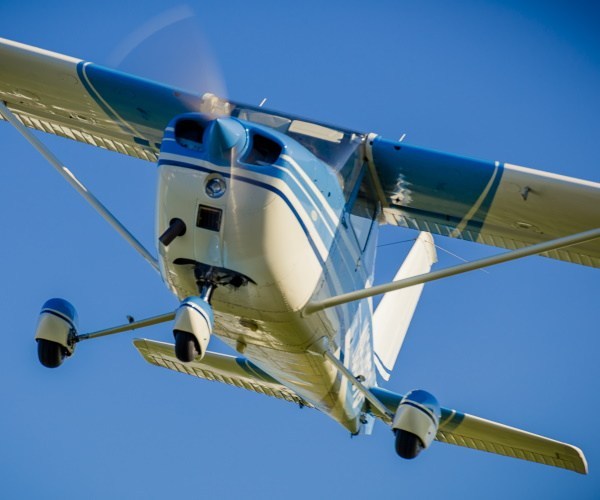Despite the snow, ice, and frigid temperatures, winter is one of the best times of the year to fly your aircraft. Not only is there less air traffic, but there is also improved visibility on many days.
The cold temperatures do present new risks, but that doesn’t mean you should feel you have to put your aircraft into hibernation until spring. There are steps you can take to ensure safe and comfortable flight even in the harsh conditions of winter. Performing these steps provides quality time with your aircraft and also helps prolong its life into springtime and beyond.
Here are some tips to achieve safe flight for your aircraft during the winter months.
Change your aircraft’s oil
Whether you’re planning on flying your plane in cold weather or storing it for the winter, the oil should be changed. If you are planning on flying, changing the oil now can prevent you from having to do so during the especially frigid temps of January and February. If you use straight weight oil, you may want to switch to multi-grade oil for the colder temps. If you’ll be flying less during the winter, you may also consider an anti-corrosion additive for the engine to preserve its condition.
Old oil in your engine contains dirt and other contaminants that can cause rust and corrosion during storage, as well. If you’re not planning on flying during the winter, it’s a good idea to change your oil and replace it with a preservative oil mixture. Once you do, take a quick flight to distribute the new oil throughout the engine before storage.
Clean your aircraft’s exterior
Environmental contaminants such as dirt and insects can cause snow and ice to stick and build up on your aircraft in the winter months. Waxing your plane’s exterior can help repel ice and snow, especially on the runway during preflight. Using an aircraft window cleaner and polish can also protect and seal the windows when traveling through harsh conditions.
Lubricate all necessary parts
Lubricating helps reduce strain on certain components of your aircraft that can become stiff when flying in cold weather.
Check your heating system
Most single-engine aircraft use a shroud around the exhaust system to pump heat into the cabin – which is crucial during winter flying. As winter approaches (and before each flight), inspect the exhaust system for distortion or cracking that could allow carbon monoxide to make its way into the cabin during operation. Carbon monoxide is a poisonous gas, and failing to perform this inspection on a regular basis could have fatal repercussions.
Check your batteries
Cold weather is a battery killer, and you don’t want a dead battery to be the reason you can’t get off the runway. Test the main battery before winter to ensure it is performing as needed. If not, it’s time to replace it.
Other batteries to check and replace if needed include:
- Headset
- Carbon monoxide detector
- Flashlight
If you won’t be flying and decide to leave the battery in the plane during months of cold weather, it likely won’t perform as needed come springtime. Instead, bring the battery home and store it someplace with a temperature at least above freezing. A trickle charger can also be used every few weeks in the plane to maintain the battery’s charge and prolong its life.
Be prepared
Above all else, be prepared for anything when it comes to winter flying. You should always run through your preflight checklist for safety no matter the season, but doing so is especially critical in the winter. Things like tire pressure and snow and ice buildup can add new variables you need to be ready for.
Make sure you have cold-weather survival gear on your plane in case of an off-field landing. These items include:
- Extra winter clothing
- Fully charged phone
- Blanket(s)
- Flashlight and batteries
Winter aircraft storage
Even if you don’t plan on flying during the winter, you should still prepare your aircraft for storage to help ensure it’s ready to perform come springtime. Under ideal circumstances, your aircraft would be stored in an air-controlled hangar, but this isn’t always possible for all aircraft owners.
Here are some tips for properly storing your aircraft in the winter.
Cover up
It’s important to cover your aircraft during winter storage, especially if it’s not stored in a hangar. Covering the canopy, windows, propeller, and tail can prevent damage to these surfaces and can protect the instrument panel and upholstery from sun and moisture.
Fill your aircraft’s fuel tanks
Filling up with fuel reduces the amount of moisture that can condense in a partially full tank. It can also minimize the risk of cracking if your aircraft has a flexible rubber fuel bladder.
Ensure your exhaust parts perform better for longer
Nicrocraft provides flight schools, FBOs, distributors, and aircraft owners with aircraft exhaust parts that are higher-quality and more durable than the competition – and we’ve been doing so for more than 50 years. All of our aircraft exhaust parts are 100% new manufacture built to the latest OEM specifications at our state-of-the-art facility in Oklahoma City.
We are a leading global supplier of exhaust parts for Piper, Cessna, Cirrus, Beechcraft, and more. We prioritize efficient communication and rapid turnaround to get you the parts you need, when you need them. We’re aviation people whose ultimate goal is to help you get in the air and stay there.
Contact us or request a quote today for the best way off the ground with the only aircraft exhaust parts built to take the heat.
Disclaimer: The content of this post is intended to provide educational background only and is not meant to serve as a definitive guideline or recommendation. Nicrocraft does not assume liability for any actions taken in accordance with this content.



